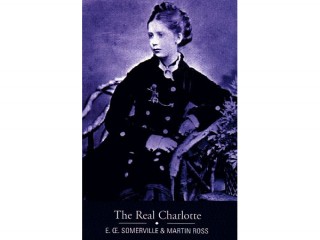
Edith Anna Somerville biography
Date of birth : 1858-05-02
Date of death : 1949-10-08
Birthplace : Corfu
Nationality : Irish
Category : Arhitecture and Engineering
Last modified : 2011-03-02
Credited as : Novelist, Experiences of an Irish R. M. stories, E. Œ. Somerville
Edith Anna Œnone Somerville, who in collaboration with her cousin Violet Martin published under the pseudonym Somerville and Ross, wrote the popular Experiences of an Irish R. M. stories, as well as one of the finest Irish novels of the 19th century, The Real Charlotte.
Although she was born (May 2, 1858) on the island of Corfu, where her father, Lieutenant-Colonel Thomas Henry Somerville, was stationed, Edith Anna Œnone Somerville returned by the age of one to Ireland, where she lived most of the rest of her life and where her stories and novels are set. Her mother was Adelaide Eliza Coghill. Edith was the eldest of eight children, all of them boys except Edith and one sister. Upon his retirement in 1859 her father returned the family to his home at Drishane House in the parish of Castlehaven in the western part of County Cork. The Somervilles (and also the Martins, to which family Edith's cousin Violet belonged) were a part of the so-called "Ascendency"—middle-class families of Anglo-Irish descent.
Edith's early years were devoted to riding and painting. The latter interest she pursued seriously, studying at the South Kensington School of Art and the Royal Westminster School in London and in Dusseldorf and Paris (in the latter place she apprenticed under Colarossi and Delecluse). She continued to paint all her life, a practice which undoubtedly influenced her literary style (critics have noted a painterly quality in her pictorial descriptions). Eventually she had successful shows of her art in London and New York, and she contributed illustrations to the literary works she did with Martin and alone. The rest of her education was conducted by governesses and briefly at Alexandra College in Dublin.
Edith's real contribution lay in the field of literature, however. The event that precipitated this commitment was her fateful meeting, on January 17, 1886, with her second cousin Violet Martin. Edith later called that January encounter "the hinge of my life, the place where my fate, and hers, turned over" (Irish Memories). Not only did the women shortly begin collaborating in literature (their first book, An Irish Cousin, was begun in 1887), they soon contracted what was known in this country as a "Boston marriage," a life long commitment between two women. Their partnership lasted until Violet's untimely death in 1915 and produced 14 books, including The Real Charlotte (1894), considered by some to be the finest Irish novel of the 19th century; Some Experiences of an Irish R. M. (1899); and Further Experiences of an Irish R. M. (1908).
While The Real Charlotte is a darkly tragic, realistic work, the R. M. stories are light-hearted and comic, though also realistically set in the Irish countryside and faithfully capturing the local Munster dialect. The comic premise of the stories is the clash that occurs between Anglo-Irishman Major Yeates, the "Resident Magistrate" (a position established throughout the British empire to oversee dependencies' legal and administrative systems) and the customs of various eccentric Irish villagers. The R. M. stories were enormously popular and gave authors E. Œ. Somerville and Martin Ross an international reputation. The stories' popularity continued into the 1980s; in 1982 a "Masterpiece Theatre" adaptation, "The Irish R. M.," was produced for British television. It aired on American public television in 1984.
Somerville and Ross also published several travel sketches, including Naboth's Vineyard (1891), about the French wine country; In the Vine Country (1893), which recorded tours in Wales and Denmark; and Beggars on Horseback (1895), which recounted a riding tour the women took through Wales, a kind of pilgrimage to the home of the celebrated "Ladies of Llanghollen," a similar female couple of the early 19th century. The third and final volume of the R. M. stories, In Mr. Knox's Country, appeared in 1915, the year of Martin's death.
That event devastated Edith, who thought she would never write again. However, she soon developed an interest in spiritualism, then very popular, by which people attempt to communicate with the dead. Through the use of "automatic writing," a spiritualistic technique, Edith came to believe that Violet was dictating messages to her. In this way she was able to resume writing, firmly convinced that their literary partnership could continue as it was. She, therefore, retained the "Somerville and Ross" designation on most subsequent works of her authorship. Of these 15 further books some are reminiscences, such as Irish Memories (1917); some are miscellaneous collections (of both her and Martin's work), such as Strayaways (1920); and many are novels, including Mount Music (1919), An Enthusiast (1921), The Big House of Inver (1925, considered her best work of this period), French Leave (1928), and Sarah's Youth (1938).
In her later years Edith travelled widely, including trips to Denmark, France, Italy, and the United States, the last of which she recorded in The States Through Irish Eyes (1930). She developed an intense friendship with English composer Ethel Smythe, who helped promote public recognition of Somerville's accomplishment. In 1941 the Irish Academy of Letters awarded her the Gregory gold medal, its most important honor. She remained an ardent feminist, was chair of the Munster Women's Franchise League, and continued to ride, paint, and write into her final years. On October 8, 1949, Edith Somerville died in Castletownshend, where she is buried beside her beloved cousin and collaborator, Violet Martin.
















